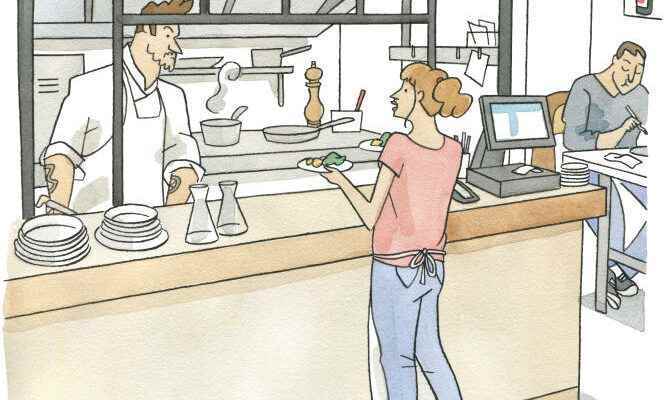“Eight or nine years ago, I burned myself eating a dish of red mullet at the Violon d’Ingres”, remembers Stéphanie Le Quellec. The chef of La Scène, in Paris, dined in the Parisian restaurant of Christian Constant, star chef now retired; she didn’t have “no longer used to blowing on food” and was not suspicious of the temperature of the fish fillet. This anecdote illustrates a phenomenon that has been at work for about ten years: the cooling of the dishes served in the restaurant.
In general, when we say “lukewarm”, you can imagine a failure, carbonara with a sauce frozen from waiting or a ceviche where the sea bream would no longer be so fresh. But what we are seeing today is the advent of the desired lukewarm: dishes that have been thought out and designed to be served lukewarm to the customer. The definition of lukewarm varies a little according to the chefs, but it is generally between the temperature of the body up to ten degrees above.
Historically, lukewarm has no place in the kitchen. “In the books of the XVIIeXVIIIe or XIXe centuries, it is found only in preparations. For example, the water to desalinate cod should be lukewarm”, says Patrick Rambourg. The historian remarks that lukewarm made a timid breakthrough after the Second World War, but only in the field of salads (of gizzards for example) or desserts (half-cooked chocolate). Chefs in their 50s and older say they were raised in “the cult of heat”. “In my family, I learned how to start very hot, even hot plates, which the waiters had to handle with battens. The heat was part of the quality standards », recalls Hélène Darroze, chef of Marsan, in Paris. Warmth was also a guarantee of hygiene at a time when cold rooms were not so common.
46°C for fish, 55°C for red meat
This cult of boiling hot has been shaken by the modernization of kitchen appliances and in particular those allowing cooking with more precision: the sous-vide method, developed in the 1970s but which really became popular in the 2000s, consists of immersing food in an airless bag in a low temperature water bath. With the development of immersion heaters and probes to check the temperature in the kitchens of professionals and even individuals, cooking has become a more exact science.
If lukewarm has become a safe bet for chefs, it is above all a matter of cooking. For Alexandre Gauthier, chef of La Grenouillère, in Pas-de-Calais, “lukewarm is the cuisine closest to the product”. According to him, fish should not be cooked above 46°C, to “not to go up the albumins and make it indigestible. 55°C is enough for red meat, 62 °C for a poultry. To be firm and crisp, a bean needs 83 °Cbut for three minutes, no more, which does not give him time to store up the heat ». His desire not to denature the product by offering it a fair cooking, which does not remove its blood or its sap, means that it will be served lukewarm.
You have 65% of this article left to read. The following is for subscribers only.
